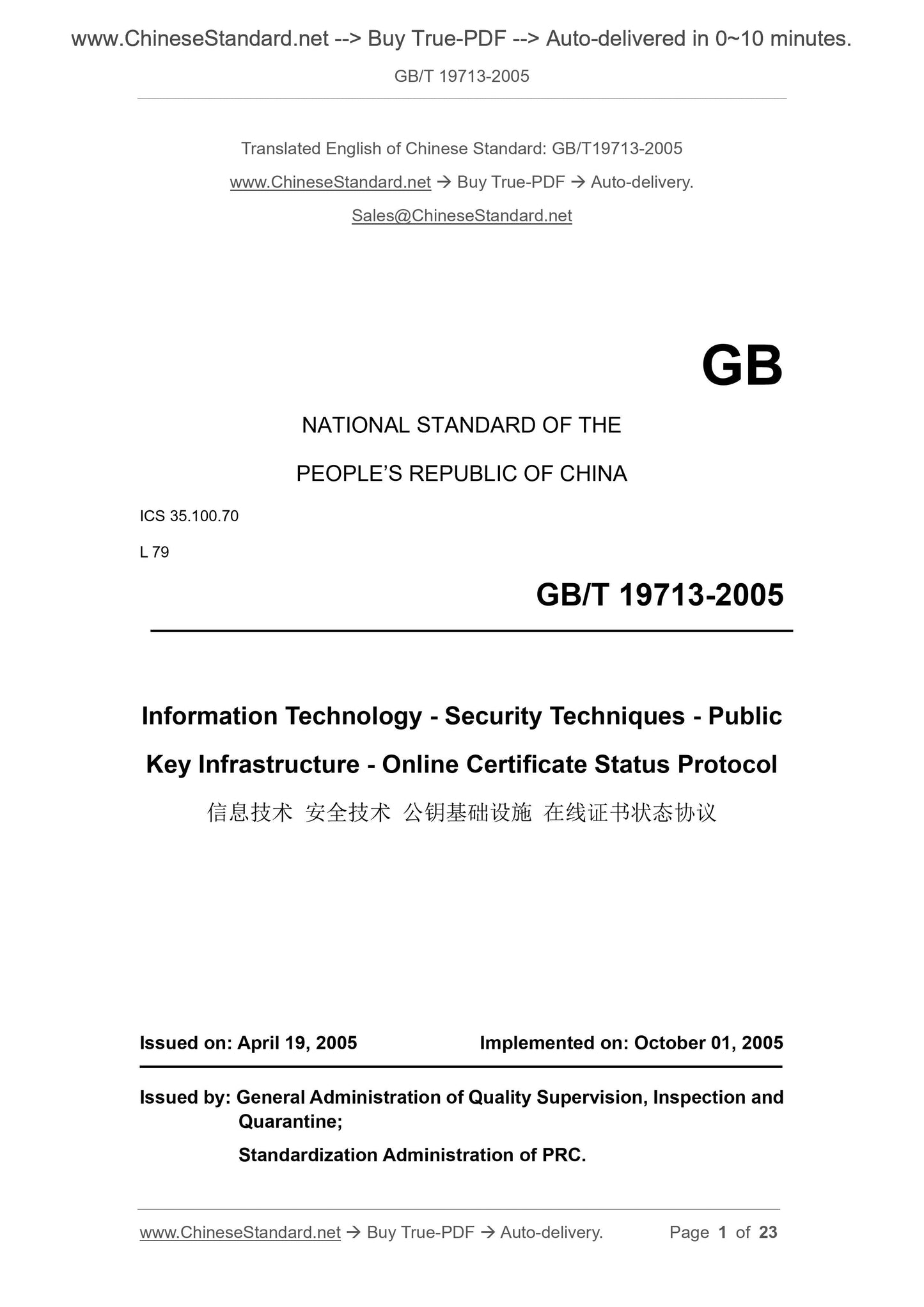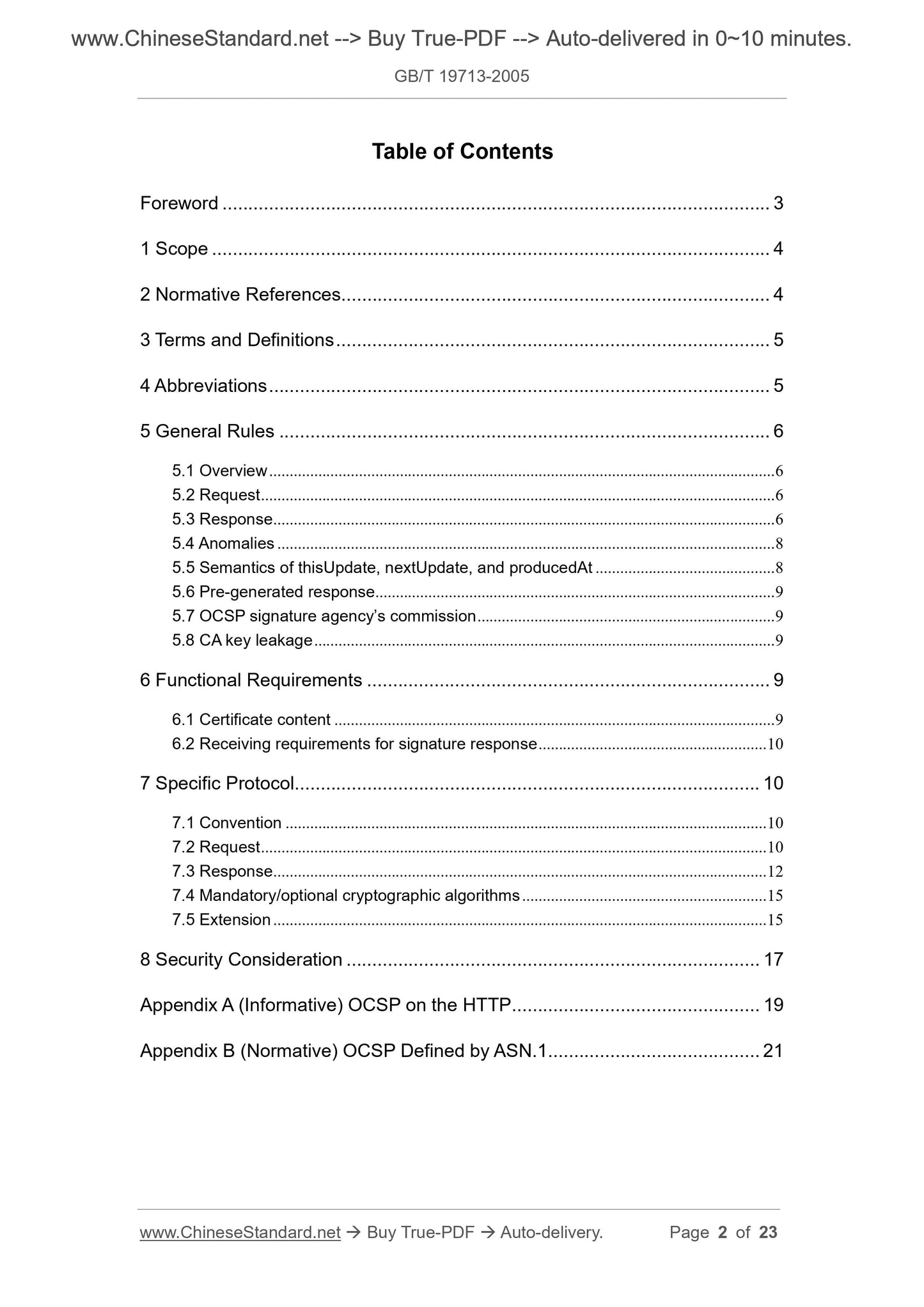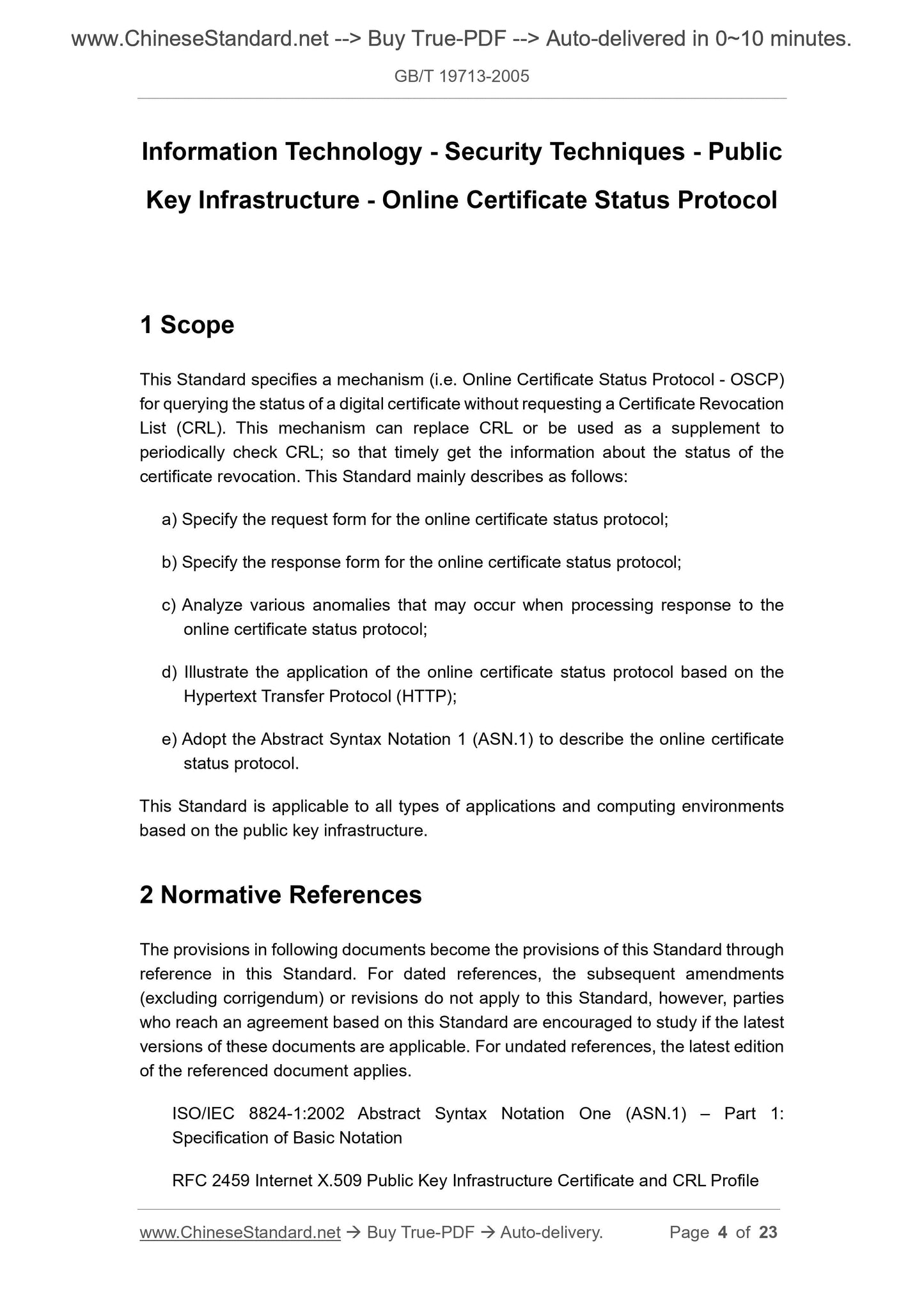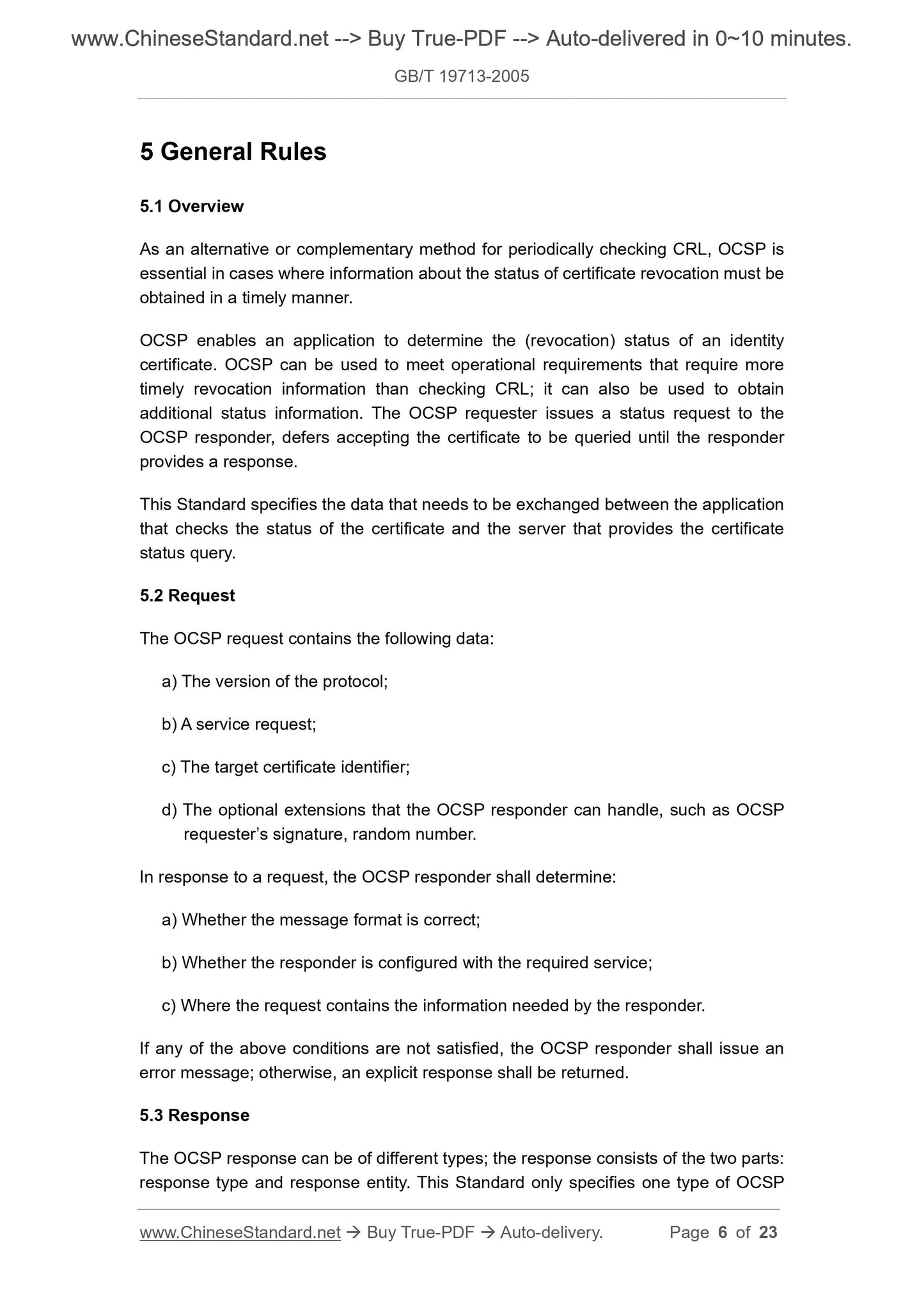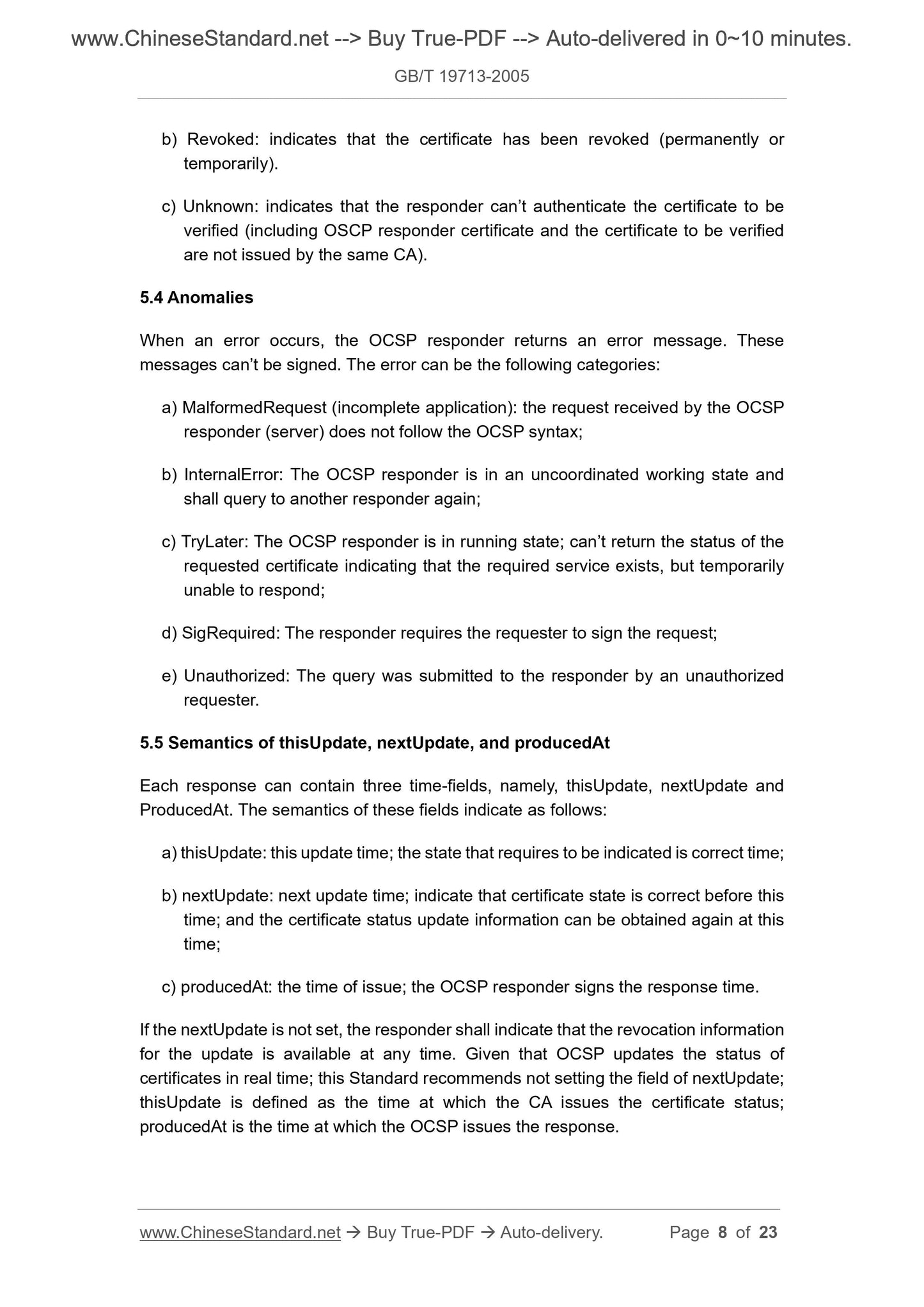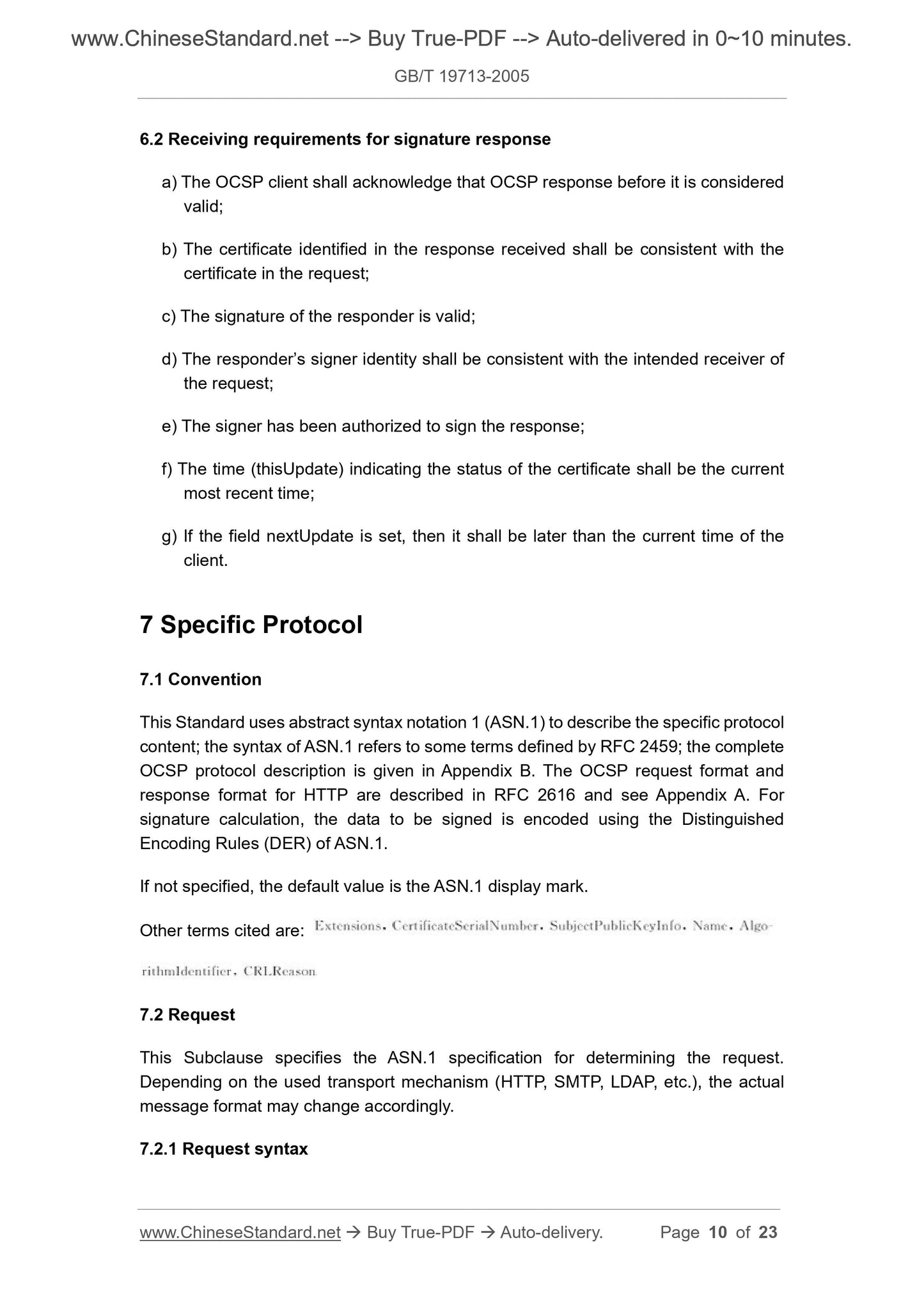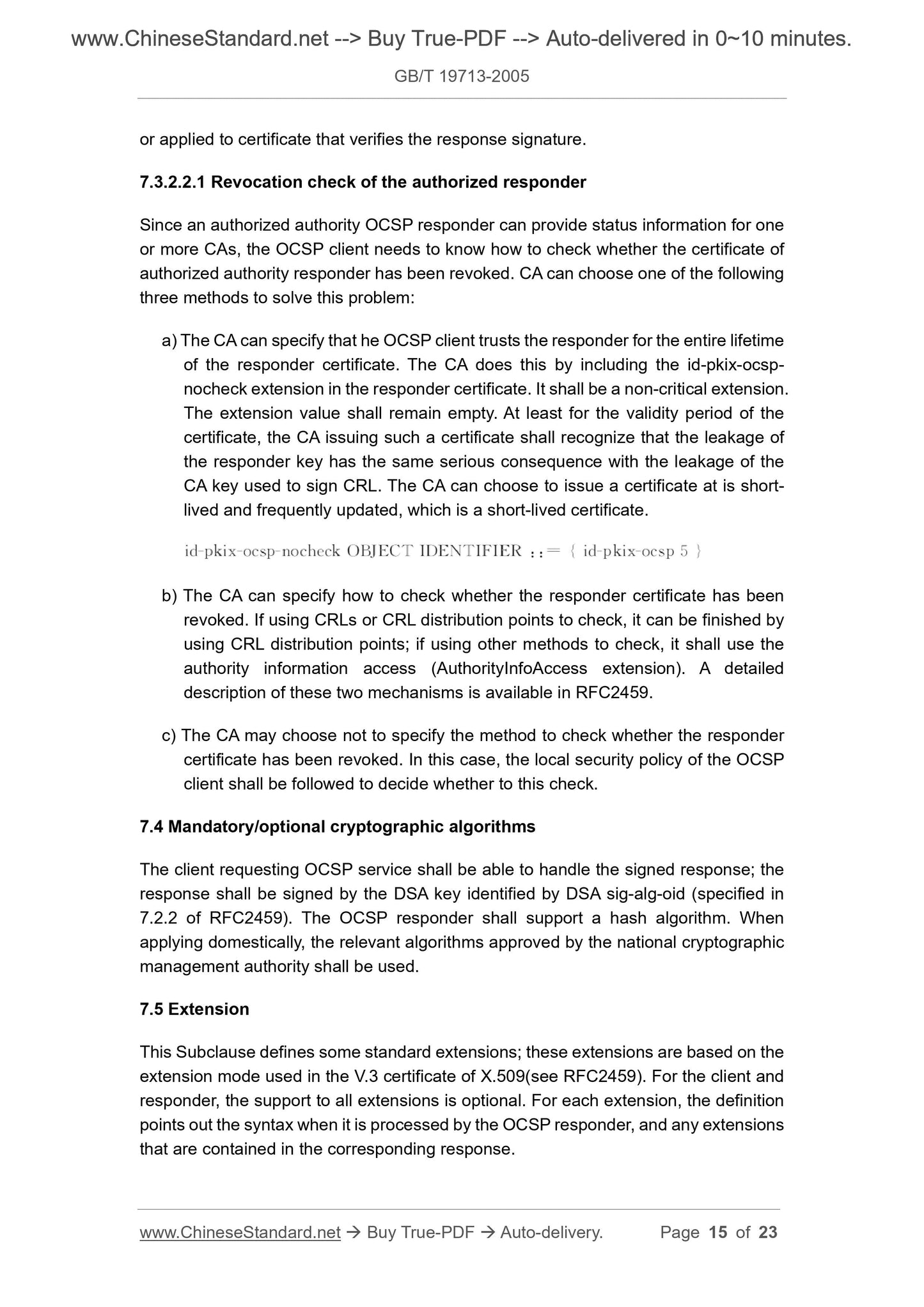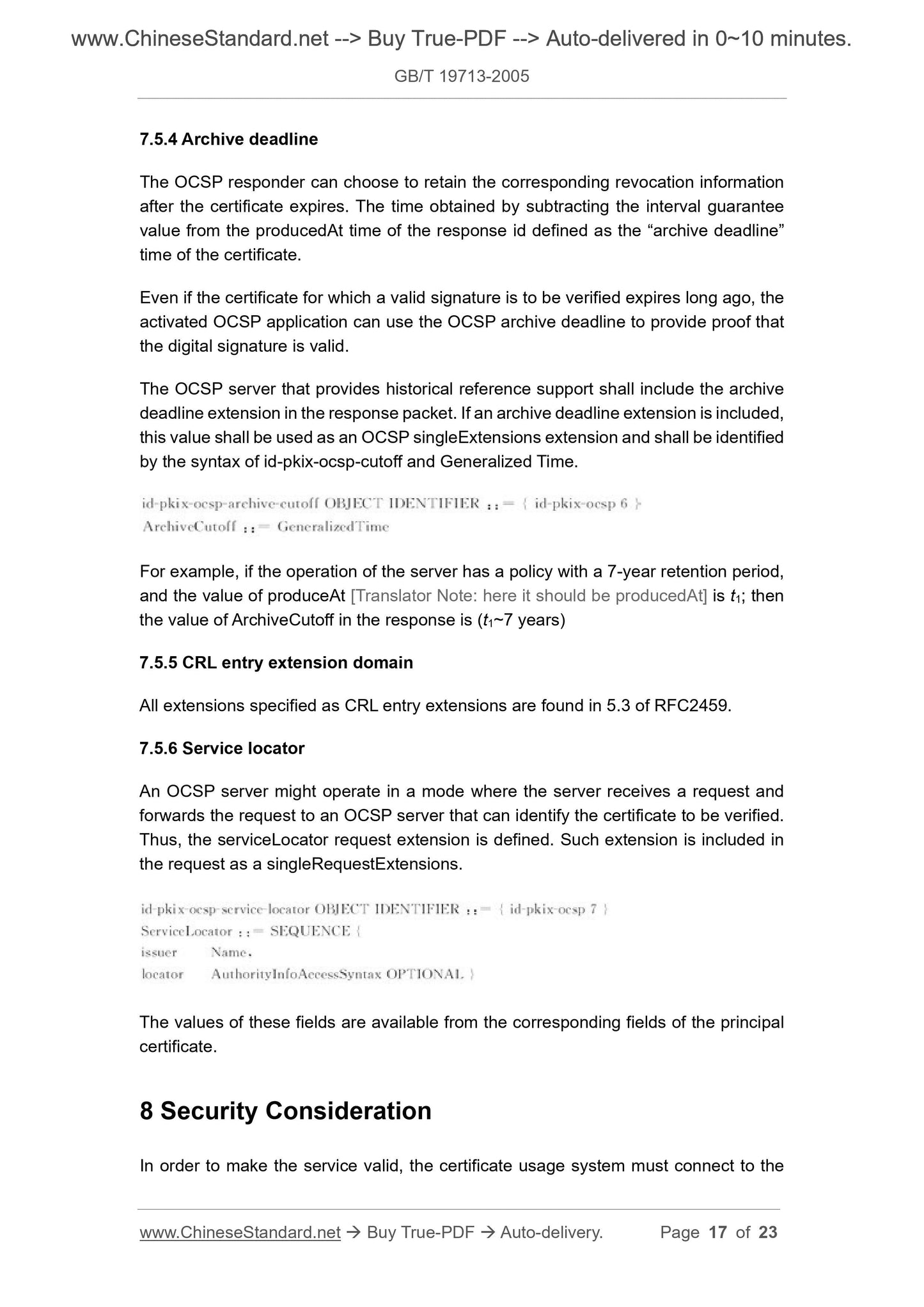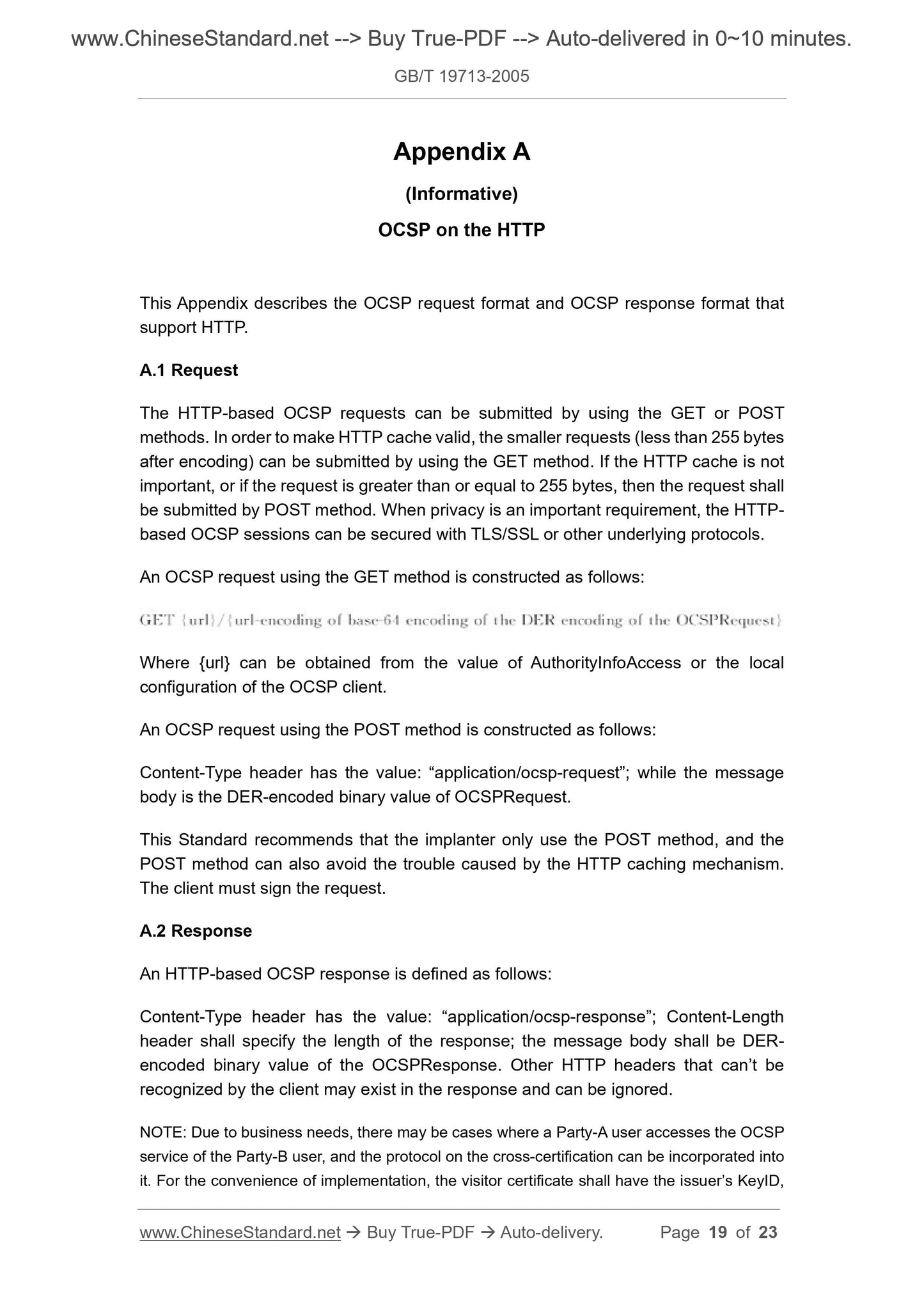1
/
of
9
www.ChineseStandard.us -- Field Test Asia Pte. Ltd.
GB/T 19713-2005 English PDF (GB/T19713-2005)
GB/T 19713-2005 English PDF (GB/T19713-2005)
Regular price
$150.00
Regular price
Sale price
$150.00
Unit price
/
per
Shipping calculated at checkout.
Couldn't load pickup availability
GB/T 19713-2005: Information Technology - Security Techniques - Public Key Infrastructure - Online Certificate Status Protocol
Delivery: 9 seconds. Download (and Email) true-PDF + Invoice.Get Quotation: Click GB/T 19713-2005 (Self-service in 1-minute)
Newer / historical versions: GB/T 19713-2005
Preview True-PDF
Scope
This Standard specifies a mechanism (i.e. Online Certificate Status Protocol - OSCP)for querying the status of a digital certificate without requesting a Certificate Revocation
List (CRL). This mechanism can replace CRL or be used as a supplement to
periodically check CRL; so that timely get the information about the status of the
certificate revocation. This Standard mainly describes as follows:
a) Specify the request form for the online certificate status protocol;
b) Specify the response form for the online certificate status protocol;
c) Analyze various anomalies that may occur when processing response to the
online certificate status protocol;
d) Illustrate the application of the online certificate status protocol based on the
Hypertext Transfer Protocol (HTTP);
e) Adopt the Abstract Syntax Notation 1 (ASN.1) to describe the online certificate
status protocol.
This Standard is applicable to all types of applications and computing environments
based on the public key infrastructure.
Basic Data
| Standard ID | GB/T 19713-2005 (GB/T19713-2005) |
| Description (Translated English) | Information technology. Security techniques. Public key infrastructure-Online certificate status protocol |
| Sector / Industry | National Standard (Recommended) |
| Classification of Chinese Standard | L79 |
| Classification of International Standard | 35.100.70 |
| Word Count Estimation | 17,178 |
| Date of Issue | 2005-04-19 |
| Date of Implementation | 2005-10-01 |
| Regulation (derived from) | Announcement of Newly Approved National Standards No. 6, 2005 (No. 80 overall) |
| Issuing agency(ies) | General Administration of Quality Supervision, Inspection and Quarantine of the People Republic of China, China National Standardization Administration Committee |
| Summary | This standard specifies a method without requesting certificate revocation list (CRL) to query the state of the digital certificate mechanism (ie, Online Certificate Status Protocol OCSP). This mechanism can be replaced periodically checks the CRL CRL or as a supplement way so that timely access to information about the certificate revocation status. |
Share
